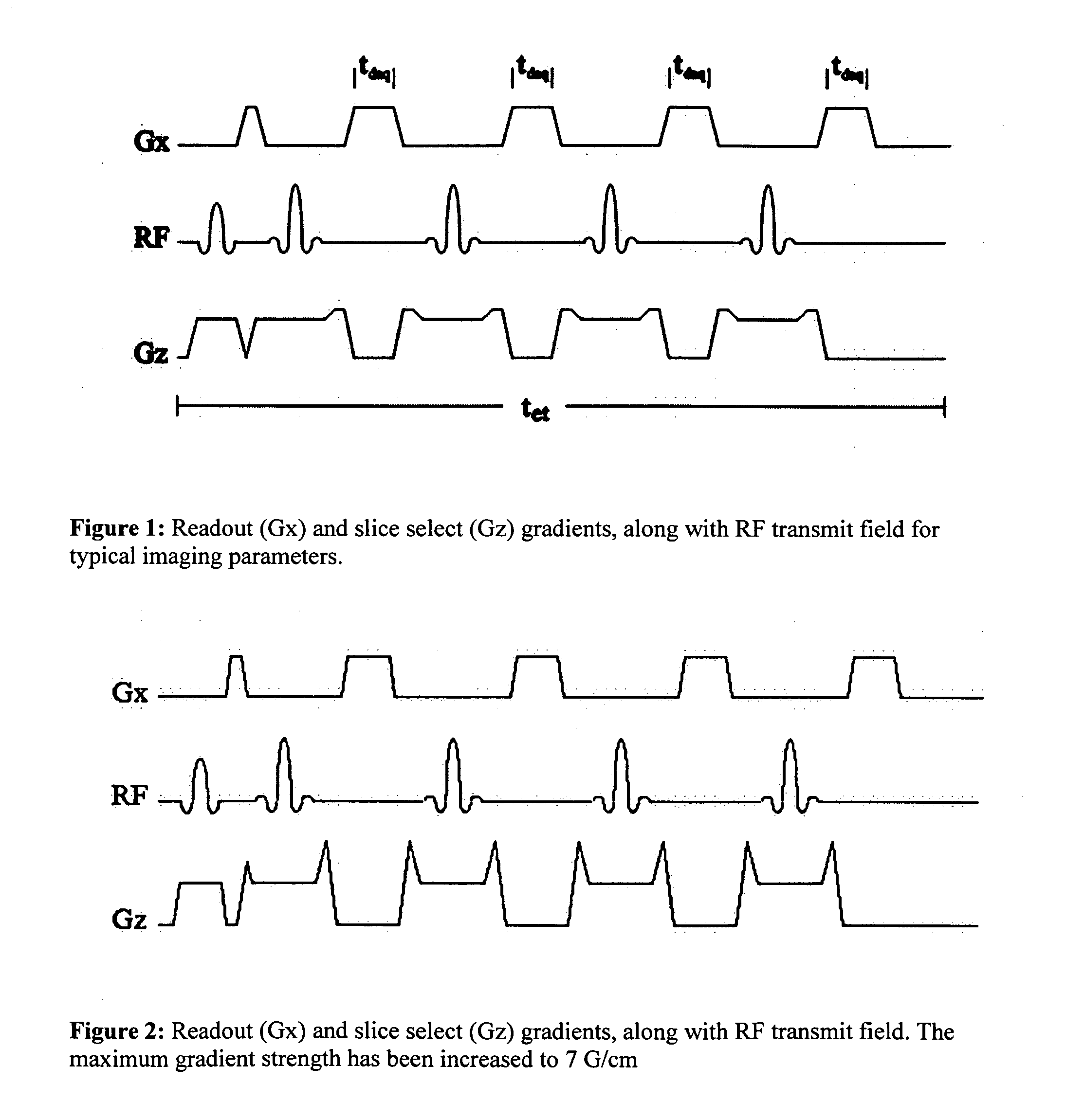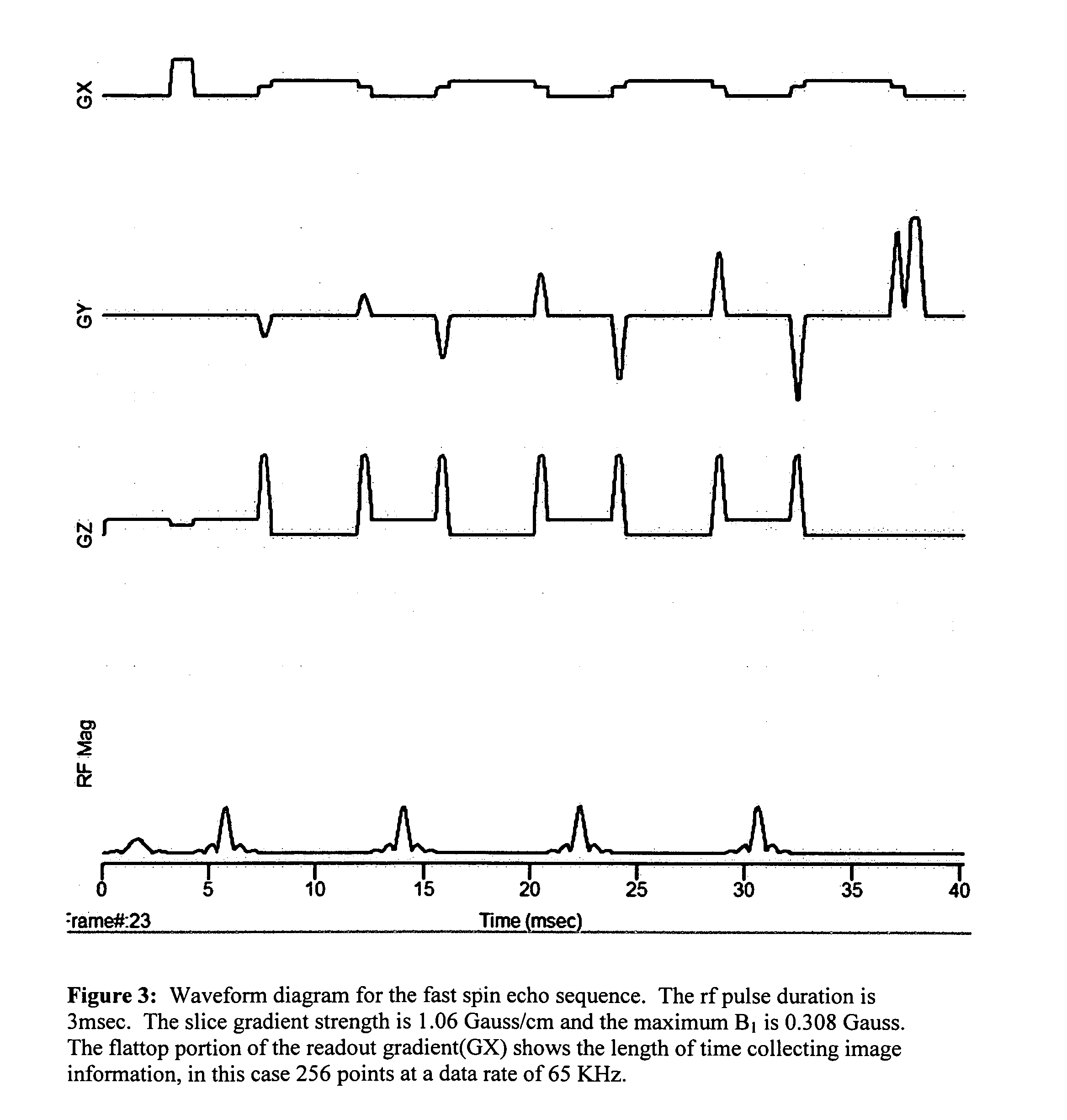Optimization of RF transmit and gradient magnetic field imaging using radio frequency and gradient coils
a magnetic field and gradient technology, applied in the field of magnetic resonance imaging techniques and devices, can solve the problems of physiological limitations preventing one from crossing certain thresholds of gradient and rf field parameters, physiological limitations are typically the amount of heat deposited in the patient, physiological limitations are typically the induced peripheral nerve stimulation (pns), etc., to achieve the effect of increasing the peak b1 transmit field amplitude, improving mr image quality, and increasing the gradient magnetic field
- Summary
- Abstract
- Description
- Claims
- Application Information
AI Technical Summary
Benefits of technology
Problems solved by technology
Method used
Image
Examples
Embodiment Construction
[0075]Reference will now be made in detail to the present preferred embodiments of the invention, examples of which are illustrated in the accompanying drawings. The method and corresponding steps of the invention will be described in conjunction with the detailed description of the system.
[0076]Embodiments of the subject invention relate to the use of smaller gradient and RF coils, and dynamically adjusting the gradient and RF pulse sequences in a way that depends upon the anatomy being imaged and the hardware being used during the exam, preferably for imaging only a portion of the body for purposes of enhancing imaging performance. The methods improve upon whole body systems by operating the coils at RF and gradient field strengths that would otherwise create unacceptably excessive heating or Peripheral Nerve Stimulation (PNS).
[0077]In accordance with one embodiment, the smaller geometry of the anatomy being imaged (and the scanner) leads to lower exposure to electromagnetic field...
PUM
 Login to View More
Login to View More Abstract
Description
Claims
Application Information
 Login to View More
Login to View More - R&D
- Intellectual Property
- Life Sciences
- Materials
- Tech Scout
- Unparalleled Data Quality
- Higher Quality Content
- 60% Fewer Hallucinations
Browse by: Latest US Patents, China's latest patents, Technical Efficacy Thesaurus, Application Domain, Technology Topic, Popular Technical Reports.
© 2025 PatSnap. All rights reserved.Legal|Privacy policy|Modern Slavery Act Transparency Statement|Sitemap|About US| Contact US: help@patsnap.com



